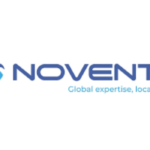The second most important leadership skill in order to be promoted to the top is executive presence, according to a recent survey from Gartner.
A lot of coaching assignments start out with the objective of improving executive presence. The International Coaching Federation (ICF) defines coaching as partnering with clients in a thought-provoking and creative process that inspires them to maximise their personal and professional potential.
So, what exactly is executive presence and how does one get it? How on earth does one convey it in the digital environment?
This is an interesting one, because how great executive presence looks like depends on many different factors, and lies in the eyes of the beholder. In short, it is hard to define.
-
Gravitas
According to Sylvia Ann Hewlett1, gravitas is at the core of executive presence: it is the ability to exude integrity, courage and confidence in times of crisis.
• Integrity
Integrity is only perceived when leadership is authentic and consistent. For this, the leaders needs to be in sync with their values and need to follow through on how they want to live these values even in times of crisis. Leaders who act according to their values appear more grounded, which in itself leads to consistent leadership.
• Values and courage
Knowing your values will help you identify what drives you: You will become conscious of what gives you energy and also what makes you angry or drains your energy.
Understanding what values drive your decisions and making these accordingly will translate into confidence and will hopefully give you the courage to make tough decisions when the time comes. Decision-making is definitely on the list of skills for executive presence.
The knowledge of what values are behind your decision should certainly help you stand by it, because it was made consistent with your values.
Looking back, even if you feel you made a mistake or should have decided differently, you took that decision as an active choice, knowing it was according to the way you want to live your values, so hopefully you shouldn’t feel guilty.
This doesn’t mean you can’t learn from mistakes. On the contrary, draw your conclusions, re-examine how you want to live your values (often, we change in our lives) and be aware in this moment how you want to move forward with this learning.
Being present in the moment
Another part of this definition of executive presence, is surely how you are received by people, which is not only external in the way you dress, your gestures or body language but more importantly, the internal quality of staying present in the moment, as the word, ‘presence’, suggests. Being present means you are focused on the here and now, while keeping your future vision in the back of your mind.
Don’t get stuck on past solutions of problems, but be open to change.
Focus on the situation, meeting, communication and problem solving at hand. A lot of that focus has to do with the ability to blend your monkey brain and stop following these racing thoughts.
You bring back your focus on the situation or meeting, you listen actively when communicating and stop your inner dialogue based on defense, distractions or daydreaming. Right now, this is even more of a challenge as many of us are working remotely and only see each other in video conferences.
Active listening
Listening doesn’t just mean to focus on what is being said, but it is equally important to read the room. Being present and in the moment, so you perceive vibes from your audience and consequently have the ability to change your delivery, react to concerns or know that different information is key.
This is why empathy plays an important part in having great executive presence.
It is also crucial to create rapport and connect with people. If empathy doesn’t come naturally, you can use mental skills to figure out what motivates people and understand, on a cognitive level, what they are thinking.
The most essential skill behind creating these crucial connections is being able to inspire trust. In these times of virtual connections, it’s even more necessary to spend enough time connecting one to one and have meaningful conversations.
Yet another part of executive presence is how you communicate and drive followership. There needs to be a good balance between being convincing and getting buy-in for your vision, but also the need to communicate the latter.
Apart from the listening skills mentioned earlier, your communication needs to be straightforward, concise and inspiring. If you sat in all day video meetings during this pandemic, you will know exactly what I mean. Think bullet points and try to engage with your communication partners interactively.
Forward communication boils down to walking the talk, and being upfront about bad news as well as admitting when you don’t know something. Concise is versant, to the point, easy to follow and well structured.
A leader’s communication needs to be open, consistent and authentic in order to inspire trust and influence people.
Being prepared is another important factor: anticipate questions as well as issues, find out where the audience stands on your topic, and so on.
Part of leadership presence is also creating a vision plus getting the buy in for it. In short, creating an elevator pitch that conveys what your future goals are and how you intend to reach them.
This is a mix of strategic skills and transformative skills like innovation as well as communication: to not just derive and formulate that vision but getting people behind it.
A great skill to have is political savviness: being able to not just understand, but drive corporate politics. Have a solid network and offer support to that network. Have a good refection on what you have to offer and how you can contribute before asking for something first.
Define who your supporters are, who can mentor or sponsor and who you trust to give you feedback. Feedback is an integral part of your journey to the top. Only when you receive timely and honest feedback can you work on the change you need for your next career step.
Make sure you communicate clearly how you want to receive that feedback.
So executive presence consists of a variety of skills that a leader needs to master. Coaching can help to achieve great executive presence by looking at a wider skillset in the coaching process, such as said values, decision making, confidence, presence, active listening, empathy, different aspects of communication, networking, being politically savvy and more.
Professional coaching services can be found using ICF’s directory of credentialed coaches spread all over the world
A professional coach can help you;
1. Figure out the skills you want to hone as work towards having the best executive presence possible.
2. Explore how you can use your network more effectively, define your elevator pitch vision and see the impact.
3. Work out the skills you want to improve.
Coaching can help with this next crucial step up the career ladder, and better executive presence. If you need support on your organisation’s and leader’s coaching journey, do contact us at ICF and our team of volunteers in India will be happy to help.
The International Coaching Federation (ICF) is the world’s largest organisation leading the global advancement of the coaching profession and fostering coaching’s role as an integral part of a thriving society. Founded in 1995, its 35,000-plus members located in more than 140 countries and territories work toward common goals of enhancing awareness of coaching and upholding the integrity of the profession through lifelong learning and upholding the highest ethical standards.
Through the work of its six unique family organisations, ICF empowers professional coaches, coaching clients, organisations, communities and the world through coaching.
1 Executive presence: The Missing link between merit and success – Illustrated, 3 July 2014 by Sylvia Ann Hewlett
 The author, Julia Atkinson is an ICF PCC certified executive coach, who has been providing successful executive coaching and leadership team development in various global Top 500 companies for over 12 years. Prior to starting an executive development firm, she gained firsthand leadership and business experience both in corporate and start-ups in IT and telecommunications. Julia’s coaching process helps clients to uncover different perspectives and insights and synthesise them into a vision. This process unearths core values and triggers enabling desired behavioural change and clarity to form new habits. Together with each client, she identifies resources and tools to ensure that the change is lasting.
The author, Julia Atkinson is an ICF PCC certified executive coach, who has been providing successful executive coaching and leadership team development in various global Top 500 companies for over 12 years. Prior to starting an executive development firm, she gained firsthand leadership and business experience both in corporate and start-ups in IT and telecommunications. Julia’s coaching process helps clients to uncover different perspectives and insights and synthesise them into a vision. This process unearths core values and triggers enabling desired behavioural change and clarity to form new habits. Together with each client, she identifies resources and tools to ensure that the change is lasting.
Value our content... contribute towards our growth. Even a small contribution a month would be of great help for us.
Since eight years, we have been serving the industry through daily news and stories. Our content is free for all and we plan to keep it that way.
Support HRKatha. Pay Here (All it takes is a minute)




































